Welcome to a new year of learning in Room 101! Our class is filled with twenty-seven third graders and me—the one who has learned with and from my students for 30 years. As you look around the room you might notice Julius Squeezer, our 35-year-old rosy boa on the science table. Or you might head over to our other science table, where potted milkweed plants are growing strong and at least eight monarch caterpillars are chomping away.
A giant bowl houses our other class pets—three varieties of beautiful beetles. Two of our class walls are filled with windows that look out onto our 10 class birdfeeders, two birdbaths, bluebird nesting boxes and our hummingbird and butterfly garden. You’ll notice the class set of binoculars, and our growing lights for baby seedlings. You may want to listen to our singing shells and count the rings on our slice of a fallen tree. Welcome!
It’s the first day of school, and as soon as possible we venture outside to explore our schoolyard. Our mission: to find the perfect rock. We all know a lot about rocks already and today we hope to learn even more. We walk under and all around our class birdfeeders and our butterfly garden. We march along the fence and out onto the playground. Screams of accomplishment bounce all around as each child finds his or her own rock.
Back in class, we share and record our rock knowledge.
“Rocks are heavy!”
“They’re hard.”
“I can skip rocks!”
“They splash when you throw them in the water. Then they sink!”
“I think mine is metamorphic.”
“Mine has crystals in it.”
Our chart fills up with rock knowledge. It is now time to shift gears and to practice looking at the rocks with scientific eyes, fingers, and noses. I ask them to carefully observe their rock by using as many senses as they can. Then I have them sketch and label the rock with as much detail and using as many descriptors as possible.
Travelling this summer, I happened to hike up and around a volcano. I’m always on the lookout for ways I can bring the environment and nature to my students, and an idea for my first-day nature experiment was forming in my head. I gathered up small pieces of pumice and couldn’t stop smiling as I imagined my students’ faces as they perform the rock experiment I have in mind for the first day of school.
Now the time is finally here. I hand out my gift to each and every one of my students and have them draw the new rock and label it.
Next, I put a cup of water on each desk. “On the count of three, we will all drop our school yard rock into the water. Are you ready? One, two, three! Drop away!”
Splash! Plop!
“It sank!”
“Mine has bubbles!”
The voices rolled around the room. The students quickly sketch their findings and write about what is happening.
“Are you ready for rock number two?” I asked. “Ready, set, go!”
I wish the world could have been eavesdropping on this moment in Room 101! Cheers and screams of amazement fly around the class. Children run around towing me to desks to show me the magic floating rock!
“Unbelievable!”
“A floating rock!”
“Rocks are supposed to sink!”
“How can this be?”
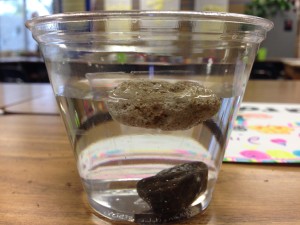
My smile is wide as I rush from cup to cup and child to child to be a part of the amazing floating rock discovery.
And now the time I have been waiting for since that day last summer when I hiked up and around a volcano, selecting 27 perfect pieces of pumice: I get to share with my students my wish for them as we start a new year of learning.
I gathered my students around me on the carpet and asked them what they had discovered. They shared that some rocks can actually float and some sink.
“So you discovered that not everything in nature is as it seems, right? A rock can float! Isn’t that amazing? Let’s make a promise to each other. Are you ready? Let’s promise to keep asking questions about everything. Let’s use our scientific senses to look beyond what we think we know. This year we will get to discover and study our school environment and so much more. Do you know what? We can use these same observation powers with each other. Let’s promise to find out about the special talents in each of us as well. Let’s work together to find those magical parts in all of us. What do you think?”
“I PROMISE! I promise! I promise! Me too!” echoes around and around, as each and every one of us agrees to never stop questioning and look at nature and each other with new eyes each and every day.
This year we will sail on an oceanography research vessel and conduct experiments that will test the health of our bay. We will take part in at least five different citizen science projects with Project North, Cornell Lab of Ornithology and Tomatosphere. We will practice our scientific skills and send the data we collect to real scientists. We will plant milkweed for the monarchs, and native flowering plants for the hummingbirds so they can have a healthy habitat just like us. And we will do our very best each and every day to keep asking questions, to discover and study, and to find the magic in each other and the world around us.

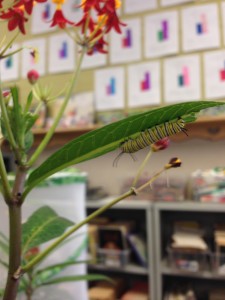
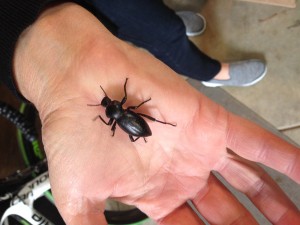
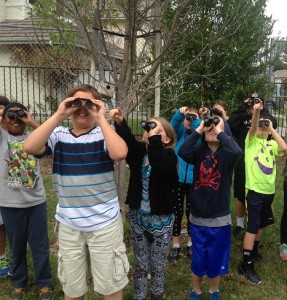
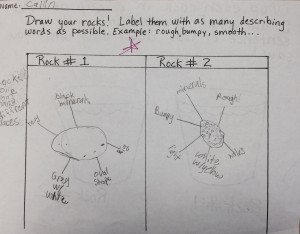
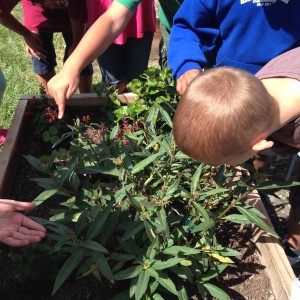
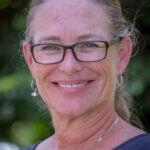
One Response
I dont know if Linda can see this, but I was one of her students. she honestly made my life better. I Moved to Texas and she is the person who I missed the most. Thank you